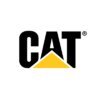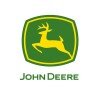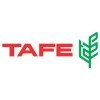Filter interviews by
Escorts Agriculture Tractor's & Equipment Manufacturers Assembly Engineer Interview Questions, Process, and Tips
Escorts Agriculture Tractor's & Equipment Manufacturers Assembly Engineer Interview Experiences
1 interview found
Interview Questionnaire
9 Questions
- Q1. 1. What is assembly?
- Ans.
Assembly is a process of joining individual components or parts together to create a larger product or structure.
Assembly involves connecting or fastening parts using various techniques such as welding, soldering, or mechanical fasteners.
It is commonly used in manufacturing industries to create products like automobiles, electronics, furniture, etc.
Assembly can be done manually by workers or using automated machines.
Ex...
- Q2. What is torque?
- Ans.
Torque is a measure of the twisting force that causes rotation.
Torque is a vector quantity, meaning it has both magnitude and direction.
It is measured in units of force multiplied by distance, such as newton-meters or pound-feet.
Torque is important in many fields, including engineering, physics, and mechanics.
Examples of torque include the force applied to a wrench to tighten a bolt, or the force applied to a car's whe
- Q3. Difference between power and torque.
- Ans.
Power is the rate at which work is done, while torque is the twisting force that causes rotation.
Power is the product of torque and rotational speed.
Torque is what gets a car moving from a stop, while power is what keeps it going at higher speeds.
Power is measured in watts or horsepower, while torque is measured in newton-meters or pound-feet.
A car with high torque can accelerate quickly, while a car with high power ca...
- Q4. What is axle?
- Ans.
An axle is a central shaft for a rotating wheel or gear.
Axles are used in vehicles to transfer power from the engine to the wheels.
They can be found in various types of vehicles such as cars, trucks, and trains.
Axles can be either live or dead, depending on whether they rotate or not.
They are typically made of steel or other strong materials to withstand heavy loads and stress.
Axles can also be used in machinery and eq
- Q5. What is the use of differential?
- Ans.
Differential is a device that splits torque between two wheels on an axle, allowing them to rotate at different speeds.
Used in vehicles to improve traction and handling
Helps in turning corners smoothly
Prevents wheel slippage on slippery surfaces
Commonly found in rear-wheel drive and all-wheel drive vehicles
- Q6. What is backlash?
- Ans.
Backlash is the amount of clearance between mating components in a mechanical system.
It is the play or lost motion between two mating components.
It can cause inaccuracies in positioning and movement.
It can be reduced by using anti-backlash mechanisms.
Examples include gears, bearings, and threaded fasteners.
It is measured in units of distance or angle.
- Q7. Define gear ratio.
- Ans.
Gear ratio is the ratio of the number of teeth on the driven gear to the number of teeth on the driving gear.
Gear ratio determines the speed and torque of a system.
It is calculated by dividing the number of teeth on the driven gear by the number of teeth on the driving gear.
A higher gear ratio means more torque and less speed, while a lower gear ratio means less torque and more speed.
Gear ratios are commonly used in ve
- Q8. 8 pillars of TPM.
- Ans.
TPM stands for Total Productive Maintenance and has 8 pillars to ensure efficient and effective maintenance of equipment.
Pillar 1: Autonomous Maintenance
Pillar 2: Planned Maintenance
Pillar 3: Quality Maintenance
Pillar 4: Focused Improvement
Pillar 5: Early Equipment Management
Pillar 6: Training and Education
Pillar 7: Safety, Health, and Environment
Pillar 8: TPM in Administration
- Q9. 7QC Tool
Interview Preparation Tips
Top trending discussions






Interview questions from similar companies

I was interviewed in Jan 2025.
My degree and
Degree related question
(1 Question)
- Q1. Self intro CV checking
(3 Questions)
- Q1. Self introduction family background
- Q2. Degree related question cat industry question
- Q3. Company related question
Interview Preparation Tips

I applied via Company Website and was interviewed in Jun 2024. There was 1 interview round.
(2 Questions)
- Q1. Mana power handling
- Q2. Production and quality mentioned
Interview Preparation Tips

Assembly Fitter Interview Questions & Answers
Isgec Heavy Engineeringposted on 25 Nov 2022
I applied via Campus Placement and was interviewed before Nov 2021. There were 2 interview rounds.

(2 Questions)
- Q1. Technical fitter se related
- Q2. Fitter iti se related
Interview Preparation Tips
- Fitter
- Apperentice
Exp-4year production
-2yearquality
-1year apperentice

I applied via Naukri.com and was interviewed before Nov 2019. There were 3 interview rounds.
Interview Questionnaire
4 Questions
- Q1. What is line balancing?
- Ans.
Line balancing is the process of evenly distributing work tasks among assembly line workers to optimize productivity and efficiency.
Line balancing aims to minimize idle time and maximize throughput.
It involves analyzing the work tasks, their sequence, and the time required for each task.
The goal is to assign tasks in a way that ensures each worker has a similar workload.
Line balancing can be achieved by rearranging tas...
- Q2. What is Takt?
- Ans.
Takt is a German term for the rate at which a product must be produced to meet customer demand.
Takt time is calculated by dividing available production time by customer demand.
It helps in synchronizing production with customer demand.
It is used in Lean manufacturing to improve efficiency and reduce waste.
For example, if a company has 480 minutes of production time and customer demand is 240 units, the takt time would b
- Q3. What is lean?
- Ans.
Lean is a systematic approach to eliminate waste and improve efficiency in processes.
Lean focuses on identifying and eliminating non-value-added activities.
It aims to streamline processes and reduce waste in order to improve productivity.
Lean principles include continuous improvement, respect for people, and customer focus.
Examples of lean tools and techniques include value stream mapping, 5S, and Kanban.
Lean can be ap...
- Q4. What are types of manufacturing losses?
- Ans.
Types of manufacturing losses include material, time, quality, and productivity losses.
Material losses occur due to scrap, rework, or defects in raw materials.
Time losses occur due to machine breakdowns, changeovers, or waiting for materials.
Quality losses occur due to defects in the final product or during the manufacturing process.
Productivity losses occur due to inefficient processes, low employee morale, or lack of
Interview Preparation Tips
Escorts Agriculture Tractor's & Equipment Manufacturers Interview FAQs
Tell us how to improve this page.
Interview Questions for Popular Designations
- Assembly Operator Interview Questions
- Assembly Fitter Interview Questions
- Assembly Production Engineer Interview Questions
- Assembly Supervisor Interview Questions
- Assembly Technician Interview Questions
- Assembly Production Interview Questions
- Assembler Interview Questions
- Assembly Line Operator Interview Questions
- Show more
Interview Questions from Similar Companies

John Deere

Thermax Limited

Cummins

Tractors and Farm Equipment
- Home >
- Interviews >
- Escorts Agriculture Tractor's & Equipment Manufacturers Interview Questions >
- Escorts Agriculture Tractor's & Equipment Manufacturers Assembly Engineer Interview Questions








